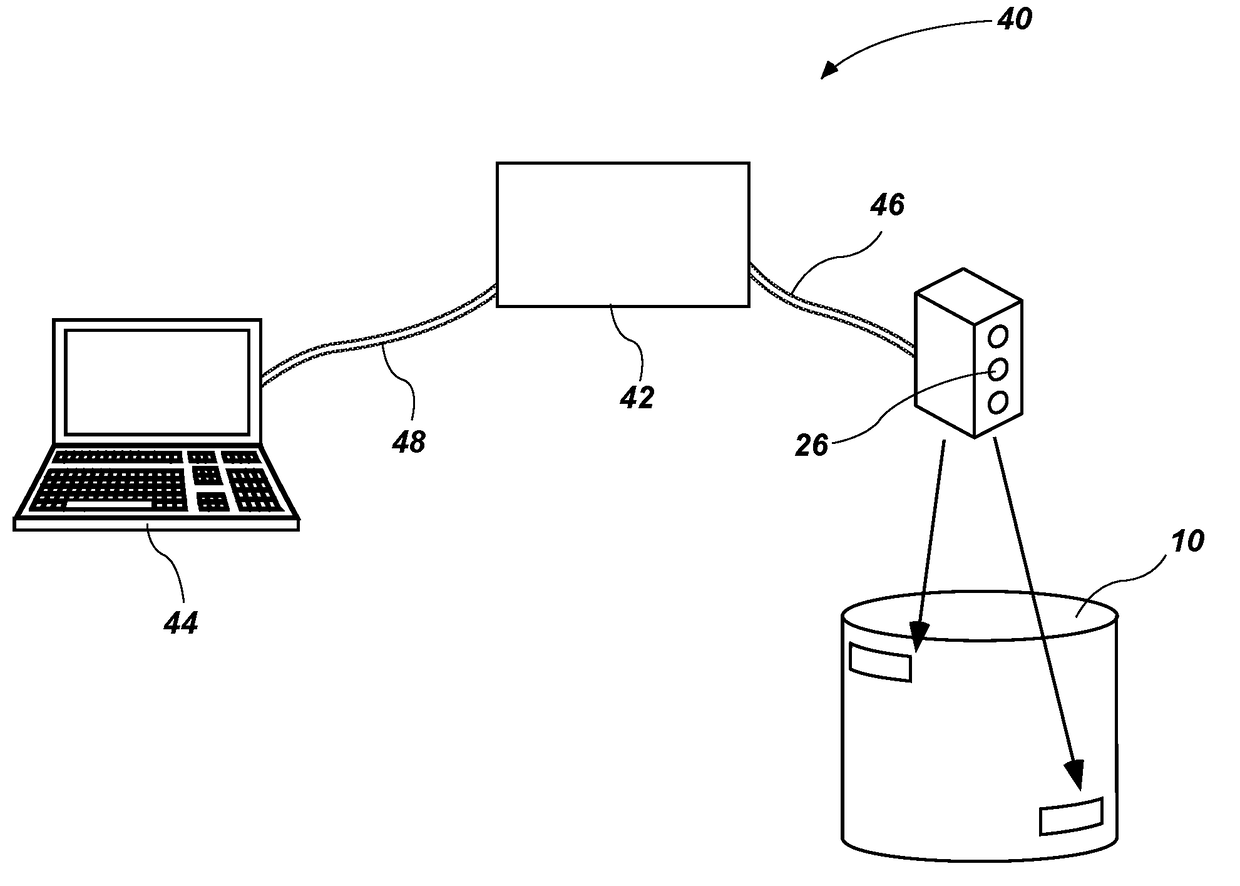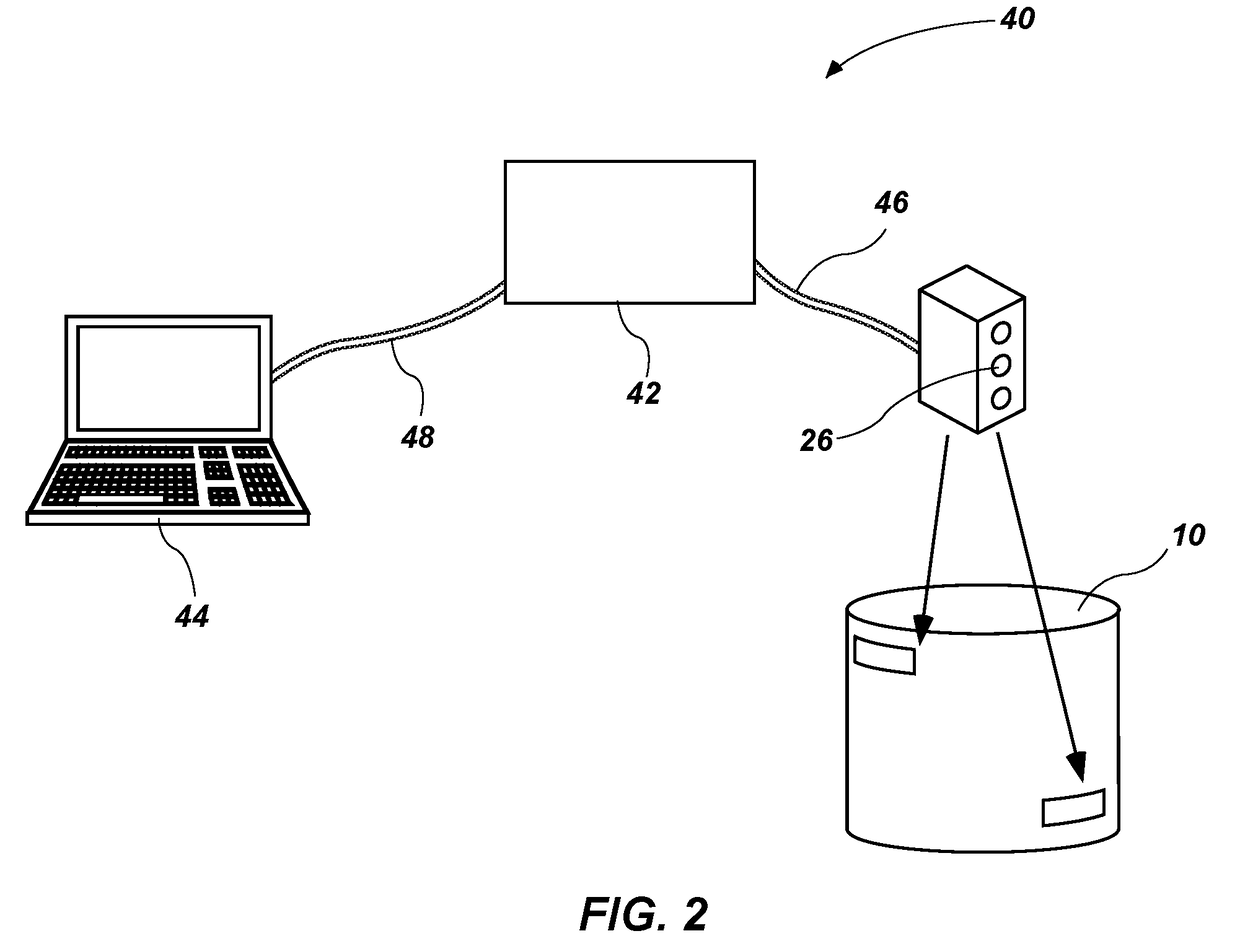Method and apparatus for online condition monitoring of spent nuclear fuel dry cask storage systems
a technology of spent nuclear fuel, which is applied in the direction of instruments, nuclear elements, greenhouse gas reduction, etc., can solve the problems of limited types of abnormalities detected by manual inspection, limited deployment of means to online monitor dry cask storage system, and associated uncertainties of simulations
- Summary
- Abstract
- Description
- Claims
- Application Information
AI Technical Summary
Benefits of technology
Problems solved by technology
Method used
Image
Examples
example 1
[0047]Since the device measures the flow rate, temperature and air composition in and out of the dry cask, the steady state dissipated heat into air can be determined using:
Q=Σi=1i=Noutmi,outTi,outCi,p,out−Σi=1i=Ninmi,inTi,inCi,p,in−EE−DE+OE (1)
where Q is the dissipated heat rate, Nout is the number of outlet vents, Nin is the number of inlet vents, mi is the mass flow rate at vent i, Cp is the specific heat capacity, T is the temperature, FE is the rate of escaped energy through the overpack surface and ground, DE is the rate of energy that is absorbed and stored, and OE is the rate of other sources of energy including radiation and chemical interactions. Most of the heat will be transferred to the flowing air. A small portion will be transferred through the overpack. A very small portion will be transferred back into the dry cask, and a negligible amount of heat is lost or generated through chemical and radiation interactions. After years in spent fuel pools, the decay heat profi...
example 2
[0049]Since the device measures the flow rate and characteristics of air flowing in and out of a canister, the net flow rate of air can be determined as:
F=Σi=1i=Nout(mi,out−di,out−ei,out)−Σi=1i=Nin(mi,in−di,in−ei,in) (2)
where di is the solid impurities concentration in air, and ei is the concentration of other elements in air. The net flow rate of air can be used for several performance indicators. For instance, a steady increase of the net air flow indicates that an additional source of flow has been introduced, possibly a canister helium leak or overpack leak. This measurement can be correlated with other measurements to determine the cause. A steady accumulated negative net flow rate indicates an overpack leak. A sudden reduction of the flow rate in multiple vents could indicate that an obstacle blocked the flow path.
example 3
[0050]The radiation level measurement at each vent can be interpreted by itself or correlated with other measurements for a performance indication. For example, an increase of the ratios of radiation level and heat dissipation in one vent to other vents points towards the radial location of a canister leakage. An increase of radiation level at an outlet and inlet vent indicates an external source of radiation (e.g., failure of an adjacent dry cask). An increase of radiation at the inlet vents only indicates fuel relocation.
PUM
 Login to View More
Login to View More Abstract
Description
Claims
Application Information
 Login to View More
Login to View More - R&D
- Intellectual Property
- Life Sciences
- Materials
- Tech Scout
- Unparalleled Data Quality
- Higher Quality Content
- 60% Fewer Hallucinations
Browse by: Latest US Patents, China's latest patents, Technical Efficacy Thesaurus, Application Domain, Technology Topic, Popular Technical Reports.
© 2025 PatSnap. All rights reserved.Legal|Privacy policy|Modern Slavery Act Transparency Statement|Sitemap|About US| Contact US: help@patsnap.com



